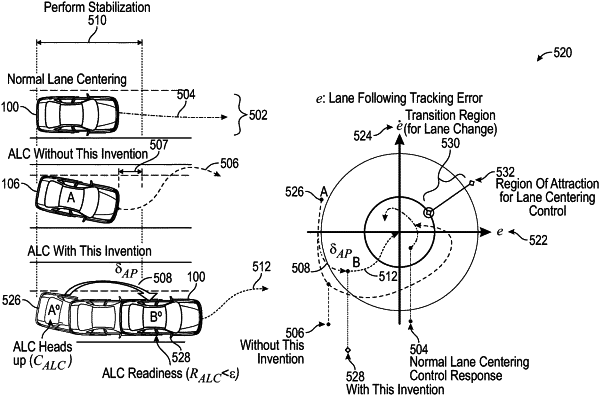| CPC B62D 15/0255 (2013.01) [B60K 35/00 (2013.01); B60K 2370/178 (2019.05)] | 20 Claims |

|
1. A system for automated lane change (ALC) operations implemented onboard a vehicle, the system comprising:
a mission planner module comprising a processor and configured to:
receive an ALC request;
send an ALC heads up signal comprising the requested ALC responsive to the ALC request;
perform confidence building operations, for a preprogrammed duration of time, responsive to the ALC request; and
upon completion of the confidence building operations, determine whether the ALC is justified based on the results of the confidence building operations; and
a lateral control module operationally coupled to the mission planner module and configured to:
receive the ALC heads up signal comprising the requested ALC;
calculate an index of readiness, RALC, responsive to the ALC heads up signal, the RALC being a function of the ALC request, a current trajectory, and lane centering controls status;
compare RALC to a predefined readiness threshold, Rt; and
when RALC is less than or equal to Rt, send an ALC ready signal; and
when RALC is greater than Rt, perform stabilization operations;
the mission planner module further configured to receive the ALC ready signal, and
generate commands to execute the ALC when the ALC is justified, responsive to receiving the ALC ready signal;
wherein the mission planner module is further configured to:
receive data about nearby road actors from a camera system and sensors;
receive data about a road geometry and road surface conditions from the camera system and sensors;
receive mapping data from a mapping system;
receive navigation system data for the vehicle; and
determine that the ALC is justified upon a determination that an intended lane is still available, all identified road actors are driving consistently, and the road geometry and road surface conditions have not changed in a manner that exceeds predetermined threshold values.
|